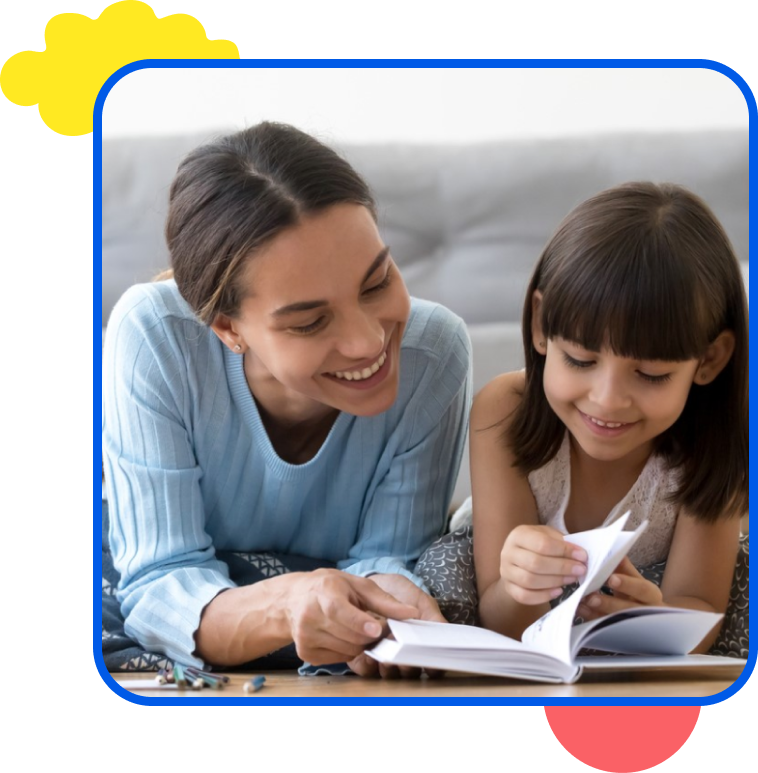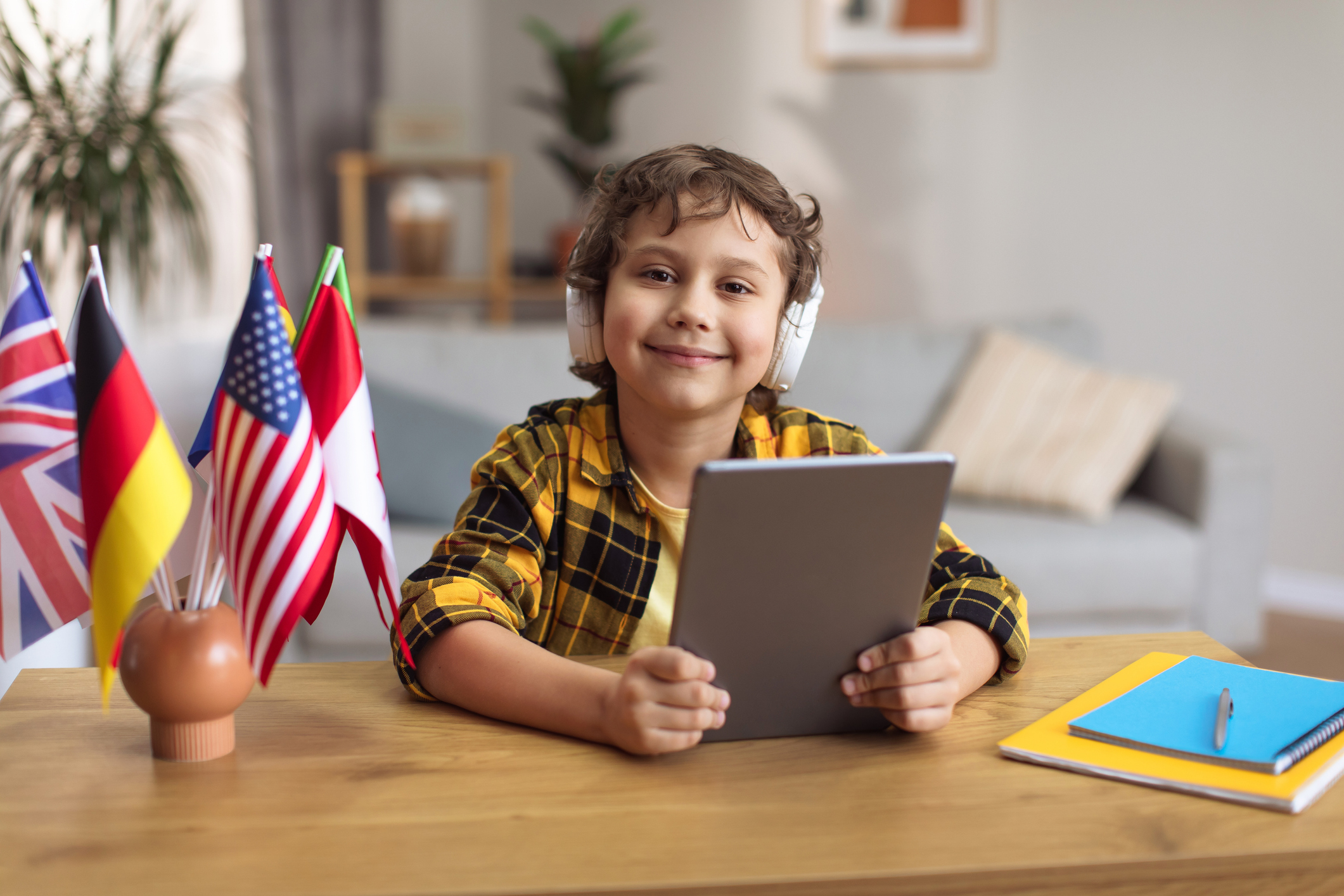Which Language Should Your Child Learn? (Quiz!)



Curious about the best language for your child to learn? Take our fun quiz to discover the perfect fit among French, Spanish, English, Korean, Chinese, or Arabic – the languages we teach at LingoCircle!
Not only will this quiz help you pick the right language, but it’ll also guide you in choosing the perfect class type (e.g., full immersion, complete beginner classes) that suits your child’s learning preferences and goals.
At the end, we’ll also provide information on how you can enroll your child in a free online language class for kids.
Let’s begin!
Which Language Quiz Questions
The following questions will help you understand your child’s language learning preferences, needs, and potential challenges.
1. What is your child’s native language?
- English
- French
- Spanish
- Chinese
- Korean
- Arabic
If your child’s native language is not officially taught or spoken in the country where you reside, choosing full immersion or dual language programs in that language could be a strategic decision.
These programs provide a dedicated environment for strengthening your child’s language skills in the target language, offering consistent exposure and practice.
Full Immersion ensures an immersive linguistic experience, while dual language programs provide a balanced approach, allowing your child to enhance their proficiency in both their native language and the target language.
Of course, you might also consider challenging your child with a new foreign language, especially if the native language is widely spoken in your country of residence.
2. Is your child already fluent in more than one language?
- Yes, fluent in multiple languages
- Yes, fluent in one additional language
- No, but exposed to another language
- No, monolingual
Multilingual children often develop a heightened sensitivity to language structures and patterns, making the language learning process more intuitive.
This advantage becomes particularly beneficial when tackling languages such as Chinese, Korean, or Arabic with complex writing systems, grammar structures, and pronunciation.
On the other hand, if your child is monolingual in English, starting with languages like Spanish or French may offer a smoother introduction to language learning.
3. How quickly would you like your child to converse with native speakers in the new language?
- ASAP – within a month
- Moderately – within 2-3 months
- Gradually – within 4-6 months
- Patiently – within 6-12 months
- No rush – over a year
Acknowledging the diverse learning curves of each language can help you and your child set realistic expectations.
Children may achieve some limited conversational skills in French, Spanish, and English after a few months of dedicated study and practice.
In contrast, languages like Korean, Chinese, and Arabic usually require longer timelines to achieve conversational fluency if starting the language as a complete beginner.
4. Is there a cultural connection or interest that might make learning a particular language easier for your child?
- Yes, a strong connection
- Yes, a moderate connection
- Neutral
- Not really
- Not at all
If there’s a strong connection, such as familial roots, heritage, or a particular cultural interest, choosing a language that aligns with these elements can make the learning experience more engaging and meaningful.
For example, if your family has a strong connection to French culture or has relatives who speak French, opting for French classes may cultivate a deeper connection and enthusiasm in your child.
A moderate connection or neutral interest can still provide a valuable foundation for language learning. On the other hand, choosing a language with little to no connection may require additional efforts to spark and maintain interest throughout the learning journey.
5. How comfortable do you think your child will be with learning new writing systems?
- Very comfortable
- Comfortable
- Neutral
- Uncomfortable
English, Spanish, and French have relatively familiar writing systems, creating a smoother transition into reading and writing.
On the other hand, if your child expresses discomfort with learning new writing systems, languages like Korean, Chinese, or Arabic might require additional support and patience.
Which Class Type Quiz Questions
This next set of questions aligns with different class types offered at LingoCircle.
The options include full immersion or dual language programs, classes aligned with the preschool or elementary school curriculum in the target language’s home country, and beginner foreign language programs.
The key at the end of this section provides insights into which class type best caters to your child’s age, linguistic background, and educational preferences based on your answers.
6. Is your family bilingual or multilingual?
- Yes, we embrace multiple cultures and languages at home
- No, we primarily communicate in one language at home
7. For which age group is your child seeking language classes?
- Preschool (3-5 years old)
- Elementary School (6-7 years old)
- 8+ years old
8. Is your child currently fluent in the target language, or are they beginners?
- Fluent or have basic proficiency
- Beginners – starting from scratch
9. Would you prefer language classes that follow a traditional preschool and elementary school curriculum?
- Yes, we want classes aligned with traditional educational standards
- No, we prefer a more flexible learning approach
10. Would you prefer language lessons for your child to be taught in the target language only or in both the target language and a second language of your choice?
- Target language and a second language of our choice
- Target language only
Class Type Recommendations
- Mostly A’s and B’s: Consider Full Immersion or Dual Language Programs
- Mostly A’s and C’s: Explore Preschool or Elementary School Curriculum
- Mostly B’s and C’s: Beginner Foreign Language Program
Get a Free Online Language Class for Kids
Regardless of the language your child begins learning, the value of knowing two or more languages extends far beyond linguistic proficiency.
Language learning enhances cognitive abilities, strengthens cultural understanding, and opens doors to a world of diverse experiences!
If you want to give your child the gift of being bilingual, consider enrolling them in online language classes at LingoCircle!
We offer online classes in French, Spanish, English, Chinese, Korean, and Arabic.
Why choose LingoCircle?
- Experienced teachers. LingoCircle has a team of experienced, passionate, and native-speaking teachers who specialize in online language teaching for children ages 3-15. Our educators also understand young learners’ unique needs and challenges, making the language-learning process engaging and effective.
- Interactive lessons. LingoCircle’s classes are interactive and dynamic. Our teachers use a variety of engaging activities, games, and multimedia to keep children excited about learning. The interactive nature of their lessons ensures that your child is actively involved in the learning process.
- A fun learning environment. Learning should be enjoyable, and that’s precisely what LingoCircle offers! Our classes create a fun and supportive environment where kids can thrive. With peers from around the world, your child will not only learn a new language but also experience the joy of connecting with others.
Want to see if online language classes are suitable for your child? Click here to get your first class for free!


Simple Ways to Learn a Second Language at Home
Get resources and tips to help supplement your bilingual education journey at home.
By providing your email you are signing up to receive emails from Bilingual Bebe. Privacy Policy







